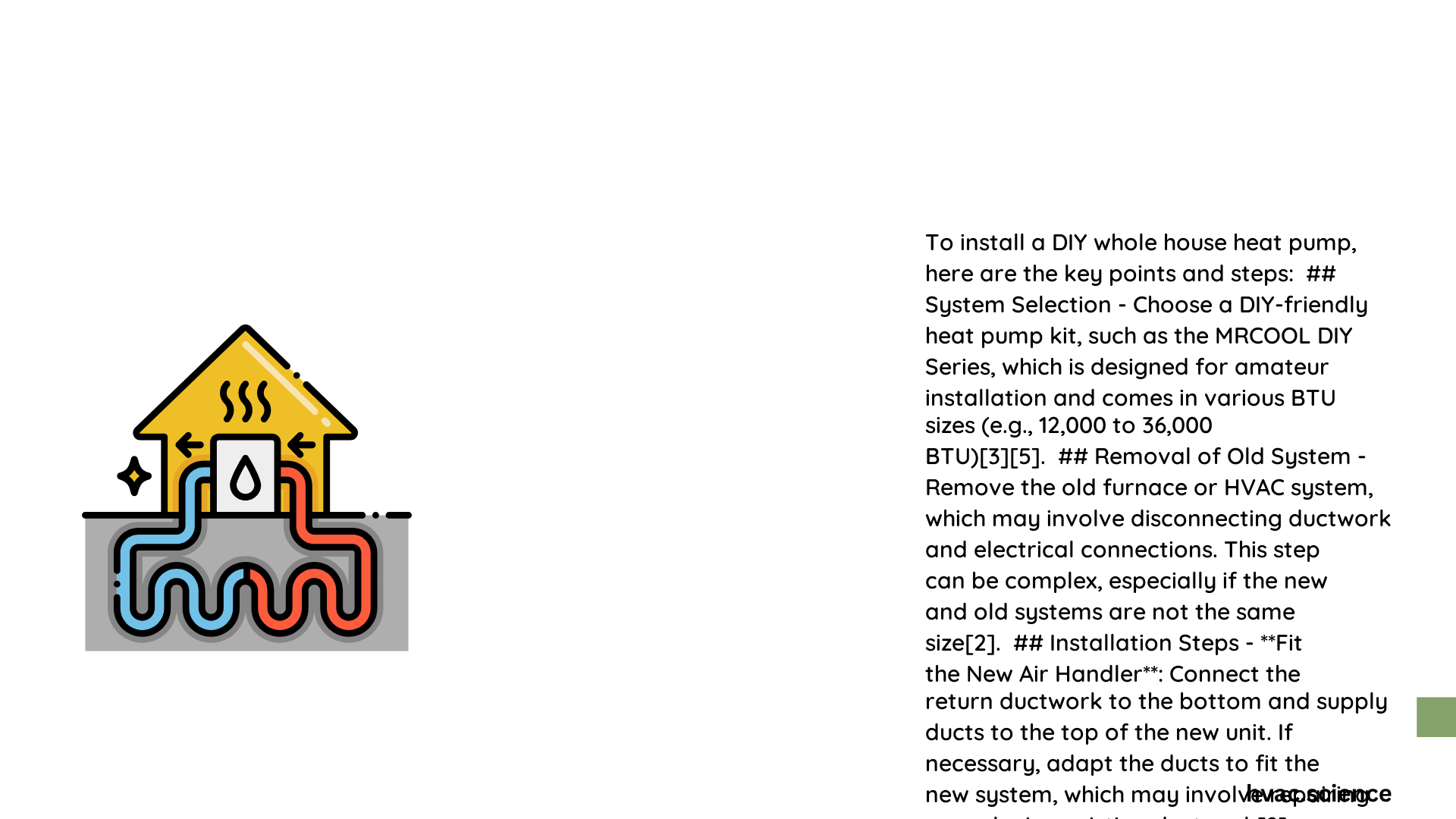A DIY whole house heat pump installation offers homeowners an opportunity to dramatically reduce energy costs and enhance home comfort. By understanding the complex process of selecting, preparing, and installing a heat pump system, you can transform your home’s heating and cooling infrastructure while potentially saving thousands in professional installation fees. This comprehensive guide will walk you through every critical aspect of a successful heat pump project.
What Makes a DIY Whole House Heat Pump Attractive?
Heat pumps represent a revolutionary approach to home temperature management, offering both heating and cooling capabilities with remarkable energy efficiency. Unlike traditional HVAC systems, heat pumps transfer heat instead of generating it, resulting in significant energy savings.
Key Advantages of DIY Heat Pump Installation
| Benefit | Potential Impact |
|---|---|
| Energy Efficiency | 30-50% reduction in energy consumption |
| Cost Savings | $500-$1,500 annual utility bill reduction |
| Environmental Impact | Lower carbon footprint |
| Home Comfort | Consistent temperature control |
How Do You Prepare for a Heat Pump Installation?

Preliminary Assessment Requirements
- Home Energy Audit
- Measure total square footage
- Calculate heat loss/gain
- Determine insulation quality
-
Assess existing ductwork
-
Equipment Selection Criteria
- Match system size to home requirements
- Consider climate zone
- Evaluate SEER and HSPF ratings
- Budget constraints
What Tools Will You Need?
Essential tools for a successful DIY whole house heat pump installation include:
- Power drill with multiple bit sizes
- Refrigerant line bender
- Torque wrench
- Vacuum pump
- Manifold gauge set
- Pipe cutter
- Level
- Electrical multimeter
How Complex Is the Installation Process?
The installation involves multiple intricate steps:
Outdoor Unit Placement
- Select level ground or sturdy wall mounting
- Ensure minimum 12-inch clearance around unit
- Protect from direct sunlight and extreme weather
- Create proper drainage slope
Indoor Unit Mounting
- Choose strategic location for optimal air circulation
- Use mounting template for precise installation
- Ensure electrical and refrigerant line accessibility
- Maintain recommended height from floor
What Are Potential Challenges?
Common Installation Obstacles
- Complex electrical wiring
- Precise refrigerant line routing
- Potential permit requirements
- Technical system configuration
- Potential voiding manufacturer warranty
Cost Considerations
Budget Breakdown
| Expense Category | Estimated Cost Range |
|---|---|
| Heat Pump Unit | $1,500 – $3,500 |
| Additional Materials | $500 – $1,000 |
| Potential Permit Fees | $100 – $300 |
| Tool Rental/Purchase | $200 – $600 |
Safety Precautions
- Always disconnect power before working
- Use proper personal protective equipment
- Follow manufacturer’s installation guidelines
- Consider professional consultation for complex steps
- Obtain necessary local permits
Final Recommendations
While a DIY whole house heat pump installation is achievable, it requires:
– Technical knowledge
– Patience
– Careful planning
– Willingness to learn
For those lacking confidence, consulting a professional HVAC technician is recommended.
Maintenance Tips
- Clean filters monthly
- Check refrigerant levels annually
- Inspect electrical connections
- Keep outdoor unit clear of debris
- Schedule professional maintenance every 2-3 years
Reference:
– Energy.gov Heat Pump Guide
– HVAC.com Installation Resources
– EPA Energy Star Heat Pump Information
